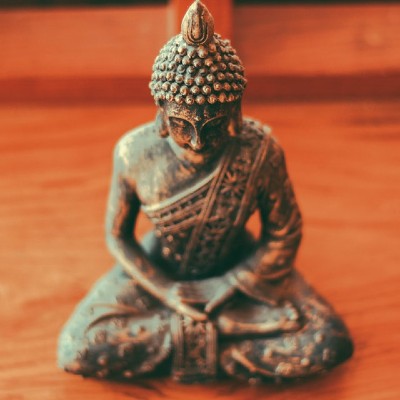Buddhist traditions have been arising, developing and spreading in the world for 2,500 years. For most of their history, the traditions remained fairly isolated from each other, both geographically and culturally. It wasn’t until the late 1800’s that Buddhism “came to the West,” and the various Asian traditions started to encounter each other. This was also a period in which the West created its own versions by applying its own cultural lenses to interpret, highlight, add to and discard parts of the historic traditions. Many experience the everything-all-at-once situation as an all-you-can-eat buffet. However, I felt caught in the middle of cafeteria food fight!
It’s why I became interested in how this kaleidoscope of ideas, that we collectively call Buddhism, began. Exploring its earliest known teachings, the Pali Canon, seemed to be a good place to start, so in 2002 I joined one of IMCW’s first sutta study* groups. I’ve been benefiting from that exploration ever since and in 2018 started a class at IMCW’s Center for Mindful Living (CML) called “Treasure Hunt”, in which we explore what I think of as Buddhism’s “old growth forest.”
So what sets this forest, the Early tradition, apart? What particular angle do the early texts take that distinguish them, not just from other streams of Buddhism, but all the other ideas we humans have had about how to lead a human life? One could start with the first verse of the Dhammapada (translation by Gil Fronsdal):
All experience is preceded by the mind,
Led by the mind,
Made by the mind…
In the introduction to his translation, Fronsdal compares these opening lines with that of Genesis, which describe the creation of the external world by an external Creator. But Fronsdal says the lines from the Dhammapada “emphasize the power of the human mind in shaping our lives.” I’ve come to think of these lines as Buddhism’s “Creation Story,” i.e. experience is not something that’s just happening – experience is something we’re creating.
This powerful starting point is complemented by many portrayals in the early texts of people who are skilled at certain activities. In one simile, for example, the Buddha compares mindfulness to a charioteer. If our fundamental assumption is that we’re creating experience, then it only makes sense to “take hold of the reins,” to guide, to steer ourselves in a direction that’s beneficial, rather than letting our old kharma, our old habits, steer us in a way that’s harmful. That we’re creating our experience, rather than being the passive receivers of experience, is the very reason that it’s possible to be free.
I believe this fundamental assumption – that we make our experience – lies at the root of the early tradition’s emphasis on staying vigilant, guarded and heedful of our thoughts, words and deeds; on making an effort to abandon what is unskillful and develop what is skillful. If we don’t appreciate the underlying assumption, all these measures seem to lure us in to the manipulative, control-freak, Type A personality behavior that a number of us would like to be relieved of.
Another frequent concern about the early teachings is that they seem to try to suppress “what makes us human.” The West’s Romantic Tradition values strong emotion, feeling the vitality of life, and reconnecting all parts of our being in the service of unity and interconnection. Anger, grief and longing make us human; they make us feel human. It’s thought that they should be valued – they show that we care. Without them, we may fear life will become bland, flat, neutral. So when we hear teachings about abandoning “parts” of “who we are,” it sounds wrong. But rather than focus on and try to figure out “who we are,” the early texts have us focus on the actions we take.
The view that the early texts have us consider is that these features of our experience are ancient, impersonal, inclinations of life. We are filled with collections of habitual actions cobbled together over countless “past lives” (as evolution shows us). Our minds create these states, take these actions, based on primordial kharma. These states and acts are aimed at survival and continuation; pleasure seeking and pain avoidance. These states are understandable and natural. When they arise we might pause, comprehend and account for them. But as forms of dukkha, something that we’re making, we can also discover how to let them go. Out of compassion, the Buddha taught us that Path of letting go – a Path of not making what causes us harm. We don’t have to accept our habitual creations of mind, actions of mind, humanity’s ancient inclinations, as the ultimate human response.
In teaching the early tradition, I sometimes feel like I’m presenting the Dharma (teachings) in ways that people aren’t used to. But as I often recommend in my classes, these are not teachings to be accepted uncritically. Instead, they’re tools to experiment and play around with. See for yourself what works. See what doesn’t. And make the shift: Rather than picturing yourself as a passive receiver of experience, realize that you’re creating the experience that you’re having.
* Sutta are the original discourses of the Buddha.



